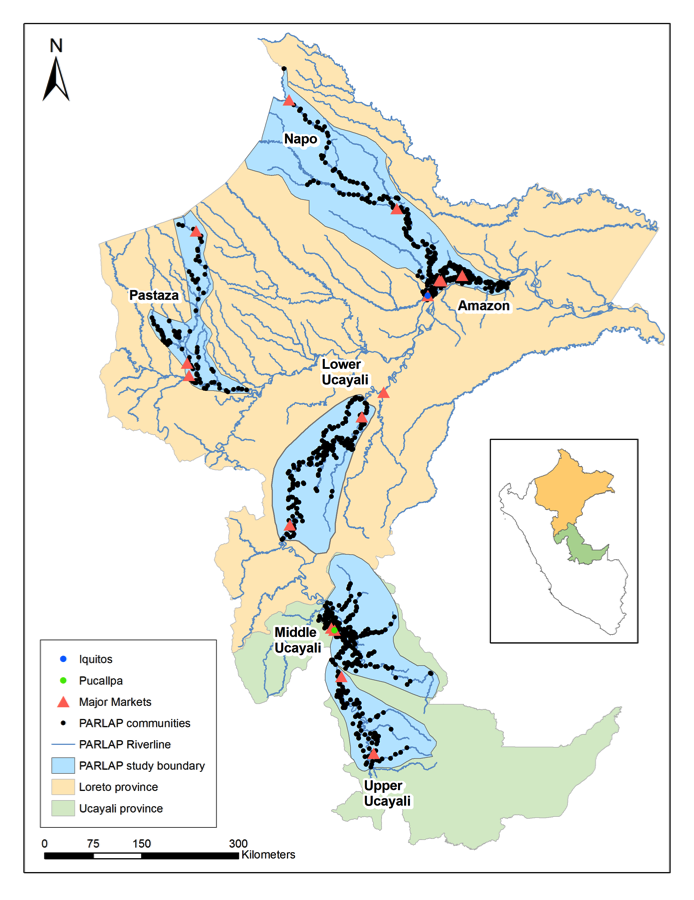The Peruvian Amazon Rural Livelihoods and Poverty (PARLAP) Project is a large-scale study of rural poverty among both folk and indigenous people in western Amazonia. Rural people in Amazonia are typically poor and rely heavily on rain forest resources to make their living. Understanding poverty in biologically rich areas of the Amazon basin is important not only for informing conservation initiatives but also for social policy to improve the well-being of rain forest peoples. This multi-year study is based on the most extensive rural community and household survey undertaken in Amazonia.
Our survey teams have been working along four major rivers of the Peruvian Amazon – the Amazon, Napo, Pastaza and Ucayali – over an area of 117 680 km2 (about 2.3 times the area of Costa Rica) and reaching nearly 1000 communities and 4000 households. Data from community and household surveys will be complemented with information derived from remote sensing and GIS analyses of natural resource availability. Of particular interest are the linkages between the environment, rural livelihoods, and poverty and their implications for conservation and development.
The study is an international collaboration between researchers at McGill University, the University of Tokyo, and the University of Toronto with funding from the Japan Society for the Promotion of Science and the Social Sciences and Research Council of Canada. Findings from this research promise to provide policy-relevant insights for conservation and poverty alleviation, and among some of the most vulnerable peoples in Amazonia.
Our survey teams have been working along four major rivers of the Peruvian Amazon – the Amazon, Napo, Pastaza and Ucayali – over an area of 117 680 km2 (about 2.3 times the area of Costa Rica) and reaching nearly 1000 communities and 4000 households. Data from community and household surveys will be complemented with information derived from remote sensing and GIS analyses of natural resource availability. Of particular interest are the linkages between the environment, rural livelihoods, and poverty and their implications for conservation and development.
The study is an international collaboration between researchers at McGill University, the University of Tokyo, and the University of Toronto with funding from the Japan Society for the Promotion of Science and the Social Sciences and Research Council of Canada. Findings from this research promise to provide policy-relevant insights for conservation and poverty alleviation, and among some of the most vulnerable peoples in Amazonia.

Map of the PARLAP study area in the Provinces of Loreto and Ucayali, Peru